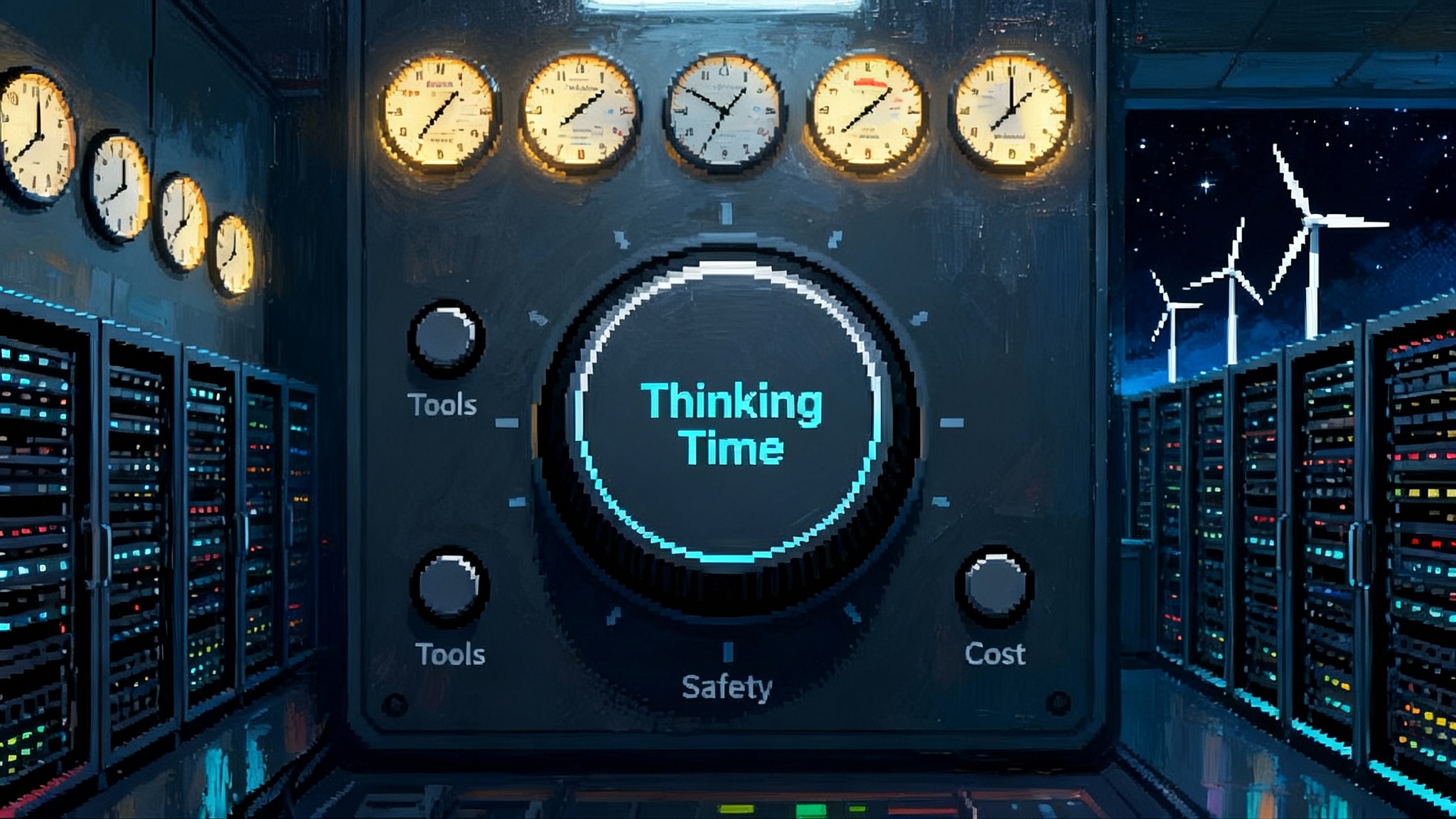From PDFs to Gradients: Compliance Becomes the New Moat
In 2025, governance jumped from static PDFs into the training loop. EU timelines, state laws, and a global safety network turned obligations into machine readable signals. Teams that code policy into pipelines will ship faster and win trust.

The week governance moved into the loop
You could feel the center of gravity shift this year. European regulators moved forward with obligations for the most capable general purpose models, setting compliance milestones in the second half of 2025 and signaling that the schedule was real. The message was simple and firm. The era of static binders is ending, and the rules are landing inside the optimizer. See the EU AI Act timeline for GPAI.
Across the United States, the action was not confined to Congress. Statehouses shaped the landscape with deepfake controls for elections, sector specific disclosures, and procurement standards that quietly rewired how agencies buy and deploy models. Colorado’s comprehensive approach became a test bed, with lawmakers and agencies adjusting scope and effective dates to give organizations time to build real operational controls. Bits and bills began to meet in the pipeline.
Meanwhile, safety institutes stopped acting like isolated labs. A cross national network of government backed institutes took shape, aligning on evaluation methods, incident reporting expectations, and usable red teaming practices. In the United States, the National Institute of Standards and Technology helped convene a shared agenda for what developers should measure and report, through the International Network of AI Safety Institutes.
Put those moves together and you get the real news. Governance is migrating from PDFs into code paths. Evals, incident reports, and even compute thresholds are becoming machine readable signals that shape training and deployment. Norms are turning into gradients.
Why norms are turning into gradients
Two forces are driving this migration.
First, the complexity of modern general purpose systems has outgrown static checklists. You cannot audit a system that changes every hour with a quarterly form. You must shape it with feedback. The only way to keep pace is to convert obligations into signals that a model and its surrounding services can see, optimize for, and fail closed against when something drifts.
Second, regulators have started to speak the language of systems. The European Union tied training compute and model capability to a higher duty of care. In practice, that behaves like an automatic flag in your build pipeline. When a model crosses a threshold, obligations change. That is not just law on paper. It is a conditional branch in your release process.
This is the big change. We are no longer talking about compliance as a binder signed in the boardroom. We are talking about compliance as a living set of tests, monitors, attestations, and gates that touch the objective function. The gradient no longer points only toward accuracy or speed. It also points toward legibility and safety.
For teams tracking the broader platform shift, this mirrors a pattern we have seen before. When interfaces are the new infrastructure, the surface you control becomes the surface you must instrument. When the AI center of gravity moves, governance must follow the new load bearing paths.
From policy PDFs to runnable code
Treat policy like executable intent. That means translating legal and contractual obligations into checks your system understands.
- Map each obligation to a measurable signal. A disclosure requirement becomes a signed artifact that is generated on every release. A misuse constraint becomes a set of adversarial tasks that must meet a passing threshold.
- Keep the signals close to where decisions happen. Place checks in training and evaluation jobs, in serving infrastructure, and in developer tooling. The closer the check is to the change, the lower the blast radius.
- Version your policies. Like code, policies evolve. Capture diffs and provenance so that you can explain what changed, when, and why.
When you implement policy as code, you reduce ambiguity. That is the hidden productivity gain. Engineers do not argue about interpretations in a pre launch meeting because the pipeline already enforces the rule. Product managers do not gamble on timelines because they can see which gates remain. Legal teams trade slide decks for dashboards.
The living compliance stack
Treat compliance like infrastructure and you get a stack that looks familiar to anyone who has built a scaled engineering platform. Here is a concrete blueprint you can implement now.
1) Continuous evaluations that run everywhere
- Curate a library of adversarial and benign tasks mapped to specific obligations. For example, jailbreak resistance tied to a duty to mitigate systemic risk, content provenance scenarios mapped to transparency rules, and copyright tests aligned to documentation requirements.
- Run tests on every candidate during pre training probes, post training alignment, and post deployment. Evaluate on slices that reflect sensitive contexts such as hiring, healthcare, and elections.
- Record results in an append only ledger with signed artifacts. Treat eval coverage like unit test coverage. Require a passing bar before promotion to a wider ring.
2) Incident telemetry that is built to be reported
- Define a shared incident schema up front. Include severity, trigger vector, reproduction steps, controls impacted, and a link to the exact model snapshot and configuration.
- Instrument runtime services to emit structured events when prompts match sensitive patterns or when outputs trigger guardrails. Use privacy preserving sampling for user content and privileged logging for developer prompts.
- Wire a 72 hour reporting bundle generator. If a serious event occurs, the system can assemble the timeline, logs, mitigations, and contact list automatically. You do not want engineers scrambling through dashboards on the worst day.
3) Red team marketplaces that create pressure and signal
- Stand up a programmatic marketplace for tests. External researchers, specialized firms, and customer domains can submit targeted scenarios. Pay bounties for novel failures, with higher rewards for reproducible chains and well specified mitigations.
- Version tests as code. When a red team discovers a new failure mode, import it, add it to the library, and backfill across older snapshots to estimate exposure.
- Run marketplace tests in pre production sandboxes and on ring fenced user cohorts with informed consent. Publish anonymized results. You are buying capability and credibility at the same time.
4) Compute and data attestations that close the loop
- Generate a machine readable bill of materials for each training run. Include data sources, filtering rules, dedup steps, and the exact compute consumed. Sign it with a hardware root of trust when feasible.
- Track total training compute against thresholds that trigger higher obligations. When the counter crosses the line, flip the pipeline into a stricter track and start the clock on required evaluations and incident procedures.
- Attach attestations to artifacts in your model registry so that downstream deployers inherit obligations with clarity.
5) Documentation as code, not a static PDF
- Write model cards, system cards, and safety cases in a structured schema stored next to your code. Autogenerate sections from eval results, incident telemetry, and data lineage.
- Link to live dashboards that mirror what you provide to authorities. If someone asks how the model behaves under jailbreak X, show the exact slice trend over time.
6) Policy ingestion that keeps you ahead
- Maintain a machine readable catalog of legal obligations by jurisdiction. Encode each clause as a set of tests, thresholds, or disclosure artifacts.
- When a rule changes, your policy engine raises diffs. Owners review and approve, then the pipeline pulls in updated tests and documentation templates.
None of this is magic. All of it is table stakes if you plan to train or deploy frontier class systems in 2025 and 2026.
Acceleration through clarity
There is a tension worth naming. If you believe regulation slows you down, this stack reads like friction. In practice, teams that operationalize the rules will ship more capable systems faster.
- Fewer late stage surprises. If the pipeline fails early on a misuse eval or a transparency requirement, product and legal do not fight the week before launch.
- Easier cross border launches. With a living policy catalog, you can branch for the European Union, the United States, and Asia in code, not in a last minute memo.
- Clearer contracts. When you attach structured obligations to an artifact, enterprise buyers sign faster because they can see how you satisfy their audit.
- Better feedback for research. If safety metrics are in the objective, researchers can optimize with them instead of optimizing around them.
Acceleration comes from removing uncertainty. Teams that treat policy as code turn uncertainty into build steps and let the optimizer do the rest. If you want a side view of how markets become mechanisms, consider how payments become AI policy. When incentives are encoded, the system moves faster and with fewer disputes.
Concrete examples you can implement now
- Make norms part of reward design. If you use reinforcement or preference based training, include safety and legibility metrics as first class signals. Penalize unsafe completions and hallucinations directly. Reward thoughtful deferrals and precise citations when appropriate.
- Gate distribution by risk tier. Require stricter eval thresholds before the model sees sensitive contexts such as employment, healthcare, or civic information. Use release rings to expand exposure as confidence grows.
- Build a serious incident button. When a user or partner reports a credible failure, a single form should attach logs, freeze the model snapshot, route the case to the right owners, and create the reporting bundle. Practice with live fire drills.
- Require signed red team packs before major upgrades. No substantial model change should ship without fresh adversarial testing from internal and external teams.
- Put a compute counter in your console. Product leaders should see total training compute and the obligations that attach at defined thresholds. Color the line red when you cross a trigger.
How the public sector is shaping the interface
Government is not writing code for you, but it is increasingly writing to you. Two examples frame the moment.
- European obligations for general purpose models. The law couples capability signals and training compute to a higher duty of care. It standardizes expectations for evaluations, adversarial testing, incident reporting, and cybersecurity. The notable twist is the use of compute thresholds as a presumption of systemic risk, which developers can rebut with evidence. That presumption is a live signal your pipeline can consume.
- The international safety institute network. Technical agencies across allied countries are aligning evaluation taxonomies and incident templates. That gives developers a common structure to implement. You will not see full uniformity, but you will see a shared baseline that turns white papers into JSON and scorecards.
These are not abstract influences. They are starting to look like inputs to your build.
The red team marketplace moment
Red teaming lived in a cottage industry for years. In 2025, it is becoming a market with standardized interfaces, reproducible scenarios, and clearer payouts. This matters for two reasons.
- Breadth beats ingenuity. A thousand diverse testers with domain expertise will find failures no single team will. A marketplace makes it scalable and repeatable.
- Signals compound. When every new exploit becomes a versioned test that you run forever, your coverage ratchets up. Your system becomes more socially legible because it regularly faces the kinds of pressure it will see in the wild.
If you run a red team program today, treat it less like a bug bash and more like a standing market. Pay for novelty and quality. Merge tests like code.
Measuring progress without gaming yourself
You get what you measure, so pick metrics that resist gaming and reflect real obligations.
- Eval coverage. What share of required legal scenarios do you test every build, and how many slices within sensitive domains do you cover.
- Time to evidentiary bundle. How long from credible incident to a signed, report ready package with logs and mitigations.
- Mean time to mitigation. How long from detection to a change that measurably reduces recurrence.
- Red team novelty rate. How many unique, non redundant failure modes are you adding per quarter.
- Regulatory change latency. How long from a new rule to an updated test and documentation template in production.
Report these to executives like you report uptime. They are that important to your license to operate.
Antipatterns to avoid
- Treating compliance as the final slide. If the first time legal sees your model is the week before launch, you waited months too long.
- Static evals. A once and done test suite invites blind spots. Tie evals to drift detection and rerun as the world changes.
- Opaque logs. Unstructured logging yields tragic incident days. Use schemas. Agree on fields. Keep them small but expressive.
- Private red teaming only. External pressure is uncomfortable and essential. Without it, you will believe your own marketing.
A 90 day plan for leaders
- Map your obligations. For each jurisdiction you serve, list specific clauses you must meet. Translate each into one or more tests, telemetry signals, or documents your system can produce on demand.
- Build the gate. Choose a threshold for promotion that blends capability metrics, safety evals, and incident free burn in periods. Make the gate default deny.
- Stand up the marketplace. Budget for external red teaming and set up a route to pull tests back in. Publish a calendar for quarterly exercises.
- Wire the panic chain. Decide now who pushes the button when a serious incident occurs and what the system does. Rehearse it like disaster recovery.
- Put compliance artifacts in your sales deck. Show buyers live dashboards and signed attestations. You will shorten cycles and raise the bar on competitors.
The next moat compiles
Regulation often arrives as a PDF. In 2025 it arrived as a set of interfaces that smart builders can code against. The teams that translate obligations into evals, telemetry, attestations, and gates will not only pass audits. They will discover they ship faster, sell faster, and cross borders with less friction. They will be more trusted because their systems are measurable on the things that matter.
The frontier will not belong to whoever writes the best safety white paper. It will belong to whoever puts the rules in the loop, makes them legible, and lets the optimizer learn from them. The next moat is a living compliance stack that you compile, test, and ship along with the model. Build it now, and the gradient will pull you forward.








